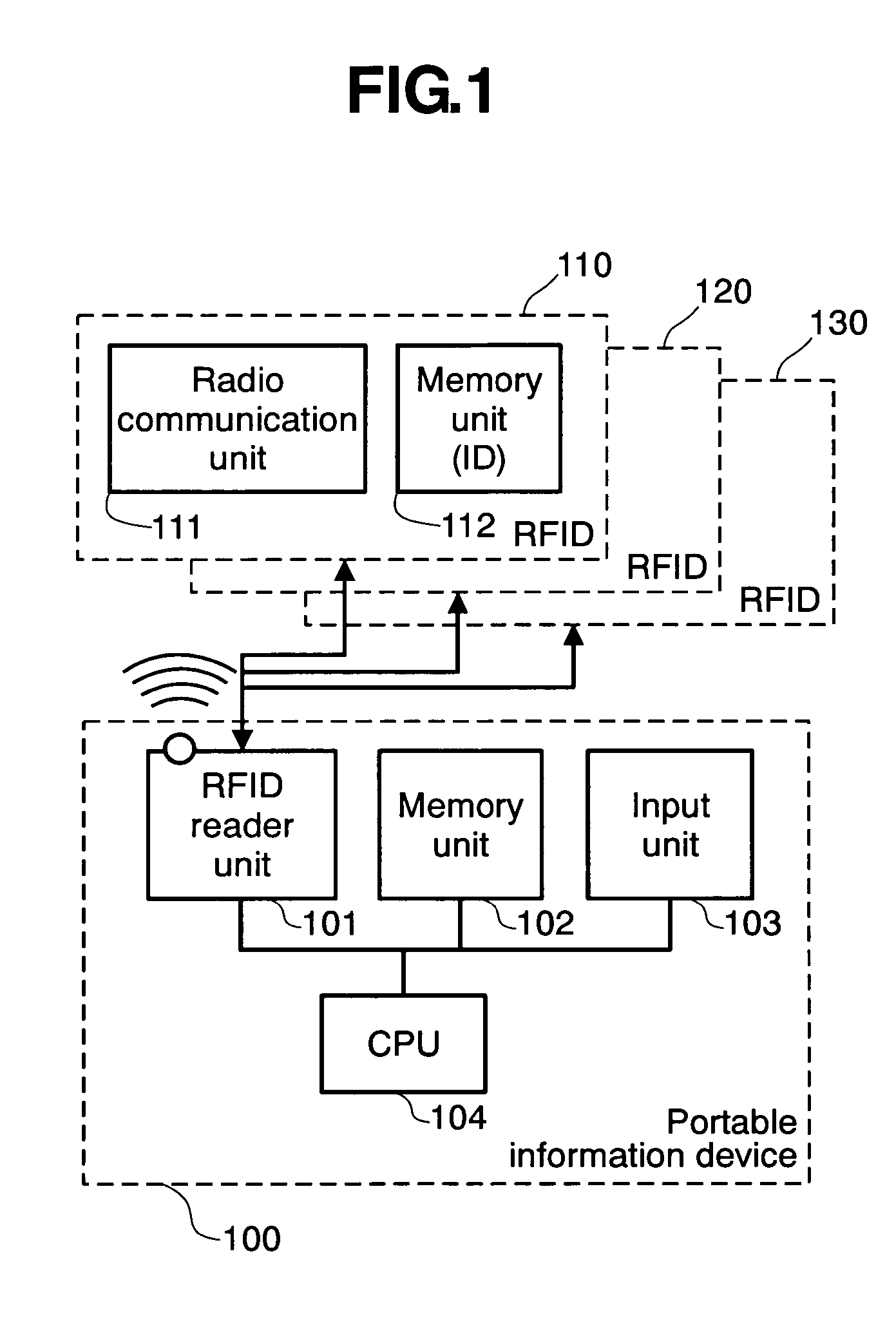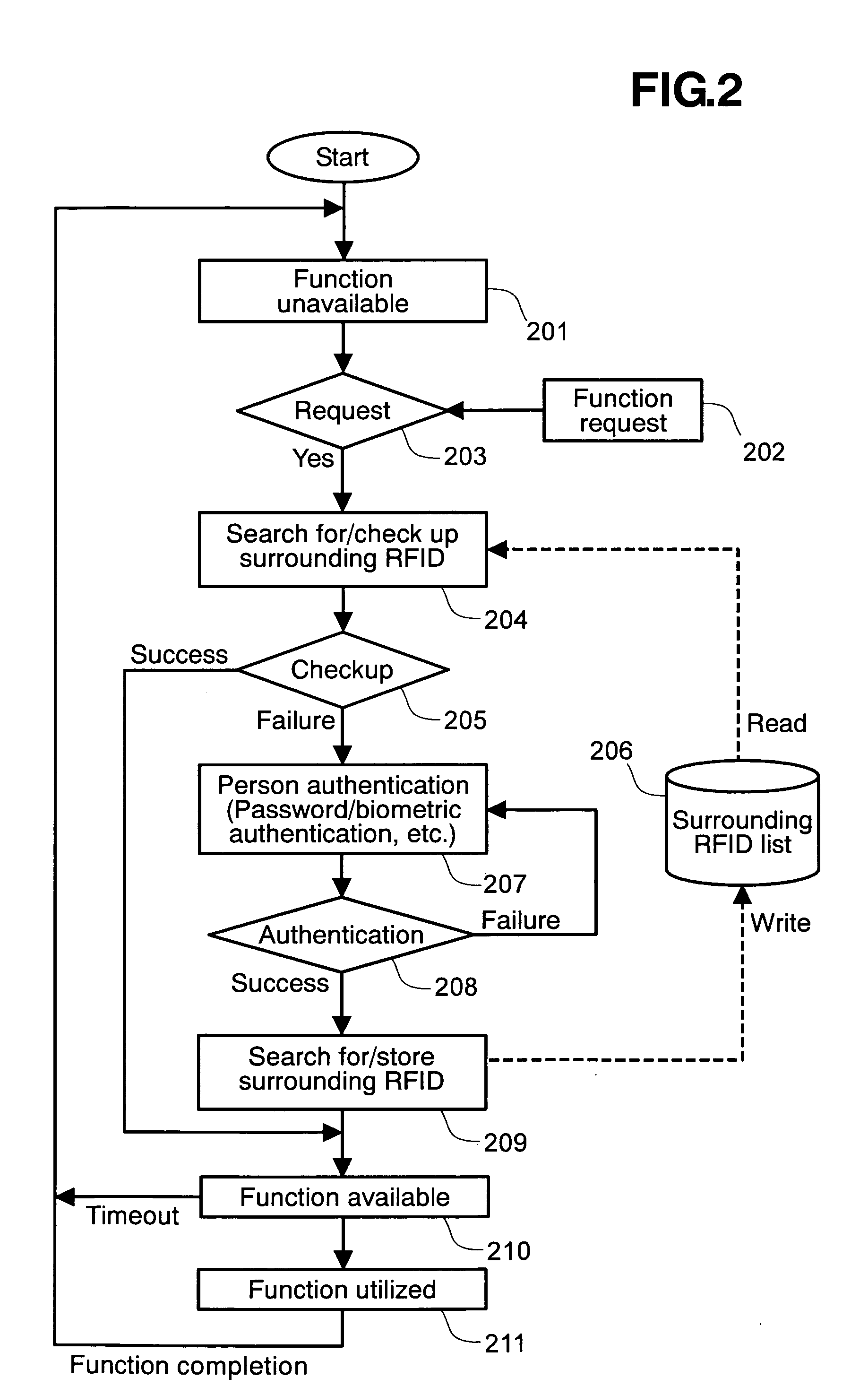Personal authentication system
a technology of personal authentication and authentication method, applied in the field of security measures, can solve the problems of saving labor required for personal authentication to be carried out, and achieve the effect of saving labor and reducing the possibility of incorrect use of personal authentication
- Summary
- Abstract
- Description
- Claims
- Application Information
AI Technical Summary
Benefits of technology
Problems solved by technology
Method used
Image
Examples
first embodiment
[0020] A first embodiment of a personal authentication system in accordance with the present invention will be described in detail with reference to FIGS. 1 and 2 of the drawings.
[0021] The first embodiment is an example of the present invention as applied to information protection for use in portable information devices, such as cellular phones and PDAs. FIG. 1 shows the overall configuration of a system that embodies the present invention. The system is composed of a portable information device 100, which includes an RFID reader unit 101, a memory unit 102, an input unit 103, and a CPU 104, and RFID tags 110, 120, 130 that can be detected by the RFID reader unit 101. The RFID reader unit 101 detects a plurality of RFID tags that are present therearound and performs a function for acquiring the inherent ID of each RFID tag. The RFID tag 110 has a radio communication unit 111 and a memory unit for storing an inherent ID, and it responds to radio communication from the RFID reader u...
second embodiment
[0032] The second embodiment is an example of the present invention as applied to the utilization of services, such as a payment that requires personal authentication, such as through use of a card having ID information. FIG. 3 shows the overall configuration of the system that embodies the present invention.
[0033] The system is composed of an ID card 300, RFID tags 310, 320, 330 that a user wears, a register terminal 340, and an authentication management server 360 connected via a network 350 to the terminal 340 for managing RFID authentication information. The ID card 300 has ID information stored in a memory unit 301.
[0034] The RFID tag has a radio communication unit 311 and a memory unit 312, and it transmits an inherent ID for response to a request from an RFID reader unit 343. This is also the case with the RFID tags 320 and 330. The register terminal 340 has a communication unit 341 for communicating with the authentication management server 360 via the network 350, an RFID...
third embodiment
[0044] A method for performing RFID-based authentication in accordance with the present invention has been described as a first embodiment in terms of a combination with another means of authentication, such as password input and biometric authentication. In the third embodiment, a method for utilizing personal authentication based on location information and connection information will be described in terms of basic authentication using the other means described above. The third embodiment will be described in detail with reference to FIG. 5.
[0045] In FIG. 5, a portable information device 500, as in the configuration described for the first embodiment, is composed of an RFID reader unit 501, a memory unit 502, an input unit 503, and a CPU 504. The portable information device also includes a connection unit 506 that is connected to a location information acquisition unit 505 for receiving information from a location information sending office 520 and acquiring the location of the p...
PUM
 Login to View More
Login to View More Abstract
Description
Claims
Application Information
 Login to View More
Login to View More - R&D
- Intellectual Property
- Life Sciences
- Materials
- Tech Scout
- Unparalleled Data Quality
- Higher Quality Content
- 60% Fewer Hallucinations
Browse by: Latest US Patents, China's latest patents, Technical Efficacy Thesaurus, Application Domain, Technology Topic, Popular Technical Reports.
© 2025 PatSnap. All rights reserved.Legal|Privacy policy|Modern Slavery Act Transparency Statement|Sitemap|About US| Contact US: help@patsnap.com



